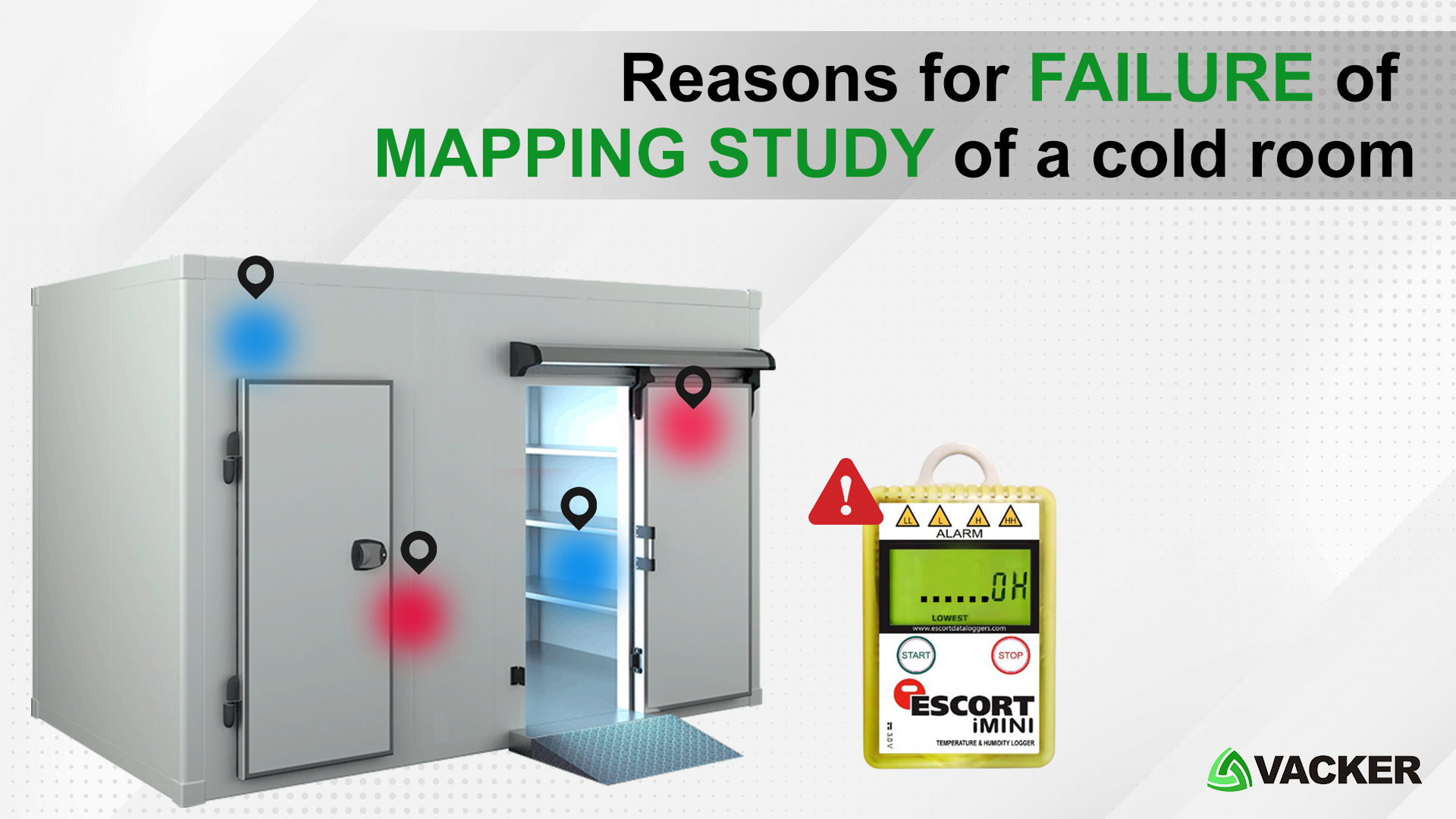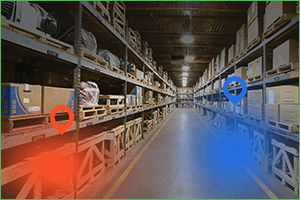Reasons for failure of Temperature mapping study & Qualification of a cold room
 Temperature mapping study and qualification of a cold room is essential in the pharma industry. This is to ascertain that the cold room maintains proper temperature and humidity. However, the chances of failure are very high for these cold rooms. We will explain a few of the major causes.
Temperature mapping study and qualification of a cold room is essential in the pharma industry. This is to ascertain that the cold room maintains proper temperature and humidity. However, the chances of failure are very high for these cold rooms. We will explain a few of the major causes.
Why does temperature mapping study of cold rooms have a high chance of failure?
If you take proper measures before commencing a mapping study of a cold room, you can avoid chances of failure.
A temperature mapping study of a cold room is complicated since it has a lot of different tests and the satisfactory completion depends on a lot of factors.
A few of the reasons for the failure of a cold room are listed below:
- There is a controller connected with sensors for the cooling units. The display unit of this controller may not be very accurate and the display resolution is mostly 0.5 °C. What this means is that it will show 4 °C, 4.5 °C, 5 °C etc. and will not show the digits in between them. Also, you have to do the calibration of the same along with the corresponding sensor. Normally this does not happen properly. During the calibration of this device, the calibration company has to inject a current corresponding to a certain temperature and check whether the display shows the right temperature. Most of the time, this procedure is not done correctly. Hence what you see on the display may not be the right temperature. The result is that if the display shows the temperature at 4.5°C, it is very well possible that the temperature near the sensor will be 5.5°C or 3.5°C.
- The design of the racks and the loading pattern may not allow proper airflow. As an example, if a rack is blocking an AC vent, the air distribution will not be uniform. If there are any blocks in the path of the circular airflow within the room, the temperature distribution will not be proper.

- Humidity is higher than the specified limit of 65% RH. This happens very often because the humidity is not considered during the design stage. For all cold rooms, the temperature is likely to go to a very high level of humidity. It may reach levels of 90-95%. In order to reduce the humidity, you will have to use dehumidifiers. Also, air curtains at the doors will help slightly in reducing the humidity. The humidity inside a cold room increases as soon as someone opens the door. Once humidity increases, it doesn’t go out of the cold room automatically. You will require dehumidifiers for removing the humidity from the cold room. There is a design calculation involved in selecting the right dehumidifier. The calculation considers the size of the room, normal temperature, maximum humidity, desired humidity etc.
- The positioning of the cooling units in relation to the position of the doors is important for proper retention of temperature. Most often, the HVAC contractors do not differentiate between the construction of a cold room for medicines and a cold room for other purposes such as fruits and vegetables. The design and installation of a cold room for medicines and vaccines require much more efforts since the auditing requirements are stringent. Mainly the tolerance level of temperature variation is higher for other purposes. However, for medicines, the range is very narrow between 2°C and 8°C.
- The programming of the defrost cycle of the cooling units affects temperature retention. This is especially important if you have multiple cooling units in the same cold room.
- Installation of Air curtains at the doors prevents the cold air from going out of the room to a certain extent. this improves temperature retention.
- Installation of PVC strip curtains at the doors also will help in preventing the loss of temperature while opening the doors. This might be slightly inconvenient for a cold room with frequent door openings. However, this helps in preventing outside from entering into the cold room.
Details of our service on the Temperature mapping study & Qualification of a cold room
- Name: Temperature mapping study & qualification for cold rooms and walk-in cold stores.
- Service Type: Temperature Mapping Study & qualification.
- Description: Temperature mapping study (combined with Humidity if required) of cold storage rooms and walk-in cold rooms are essential for the storage of medicines, vaccines etc. We carry out a series of tests to check that the cold store maintains the required temperature and humidity during operations.
- Area Served: UAE, KSA, Qatar, Bahrain, Kuwait, Oman, Jordan, Kenya, Nigeria, Ethiopia, Tanzania, Rwanda, Uganda, Djibouti, USA, Germany, India, Pakistan.
- Offered Services: We provide humidity control, monitoring systems, alert systems, temperature mapping study and qualification.
- Service Provider: VackerGlobal, PO Box 92438, Deira, Dubai, United Arab Emirates, Tel: +971 42 66 11 44.
You can look into the above aspects before starting a mapping study and qualification for the cold rooms. Should you require any more assistance please contact our experts at sales@vackerglobal.com
Leave a Reply